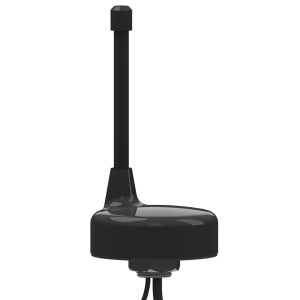Your shopping cart is empty!
MENU

Trains, trams, busses, and other vehicles used to transport equipment and material from point to point all rely on transit antennas - antennas rated for rail and transportation networks.
Trains, which run on 140,000 miles of track throughout the USA, carry around 40 percent [1] of all commodities and products transported. Positive Train Control (PTC) regulations are designed to prevent train-to-train collisions, over-speed derailments, incursions into established work zones, and movements of trains through switches left in the wrong position. However, PTC would be impossible without reliable and scalable wireless communication between onboard crew, the home office, and “wayside” structures — such as trackside objects, railway signals, third rails, overhead lines and their supports, electrification systems, platforms, or boom barriers at level crossings. [2] This wireless communication is made possible by transit antennas.
Westward Sales offers nearly three-dozen transit antennas. What they have in common is heavy-duty construction that keeps them operating despite continuous exposure to weather. Many of these transit antennas provide communication for various services, including Wi-Fi, GPS, DSRC, and voice. Antenna form factors include verticals, Yagis, blade designs, window mounts, and patch antennas.
These small but powerful antennas contain as many as four different antenna elements, each providing access to a different radio service. For example, the Mobile Mark SMW-303 multiband antenna has a radome that encloses 2x2 MIMO Wi-Fi antennas and one GPS antenna also capable of operating Galileo, Glonass, QZSS, or Beidou at 1561, 1575, and 1602 MHz frequencies. It handles 10 watts of power and provides up to 5 dBi gain with an omnidirectional radiation pattern and VSWR less than 2.0:1.
Other transit models offer combinations of Cellular/LTE, Wi-Fi, GPS, DSRC, and PTC. The SMW-PTC multiband Wi-Fi and GPS surface mount transit antenna was specifically designed for Positive Train Control applications such as train-to-wayside communication. The manufacturer designed and built this unit with heavy-duty construction to survive the rigors of railroad use. The first element covers 200-220 MHz, the second element covers 2.4-2.5 GHz, while the third covers GPS at 1575 MHz. The antennas provide 2 dBi gain on the PTC element, 5 dBi gain on the Wi-Fi element, and 5 dBi gain with a 26 dB amplifier on the GPS element. Like all others in the transit category, the antenna is enclosed in a weatherproof black or white radome and supplied with mounting hardware and a sealing gasket.
Another transit antenna designed for PTC, the Y6623D Yagi VHF antenna, is a three-element Yagi cut for any required sub-band within the 220-245 MHz band. It delivers 7 dBd and handles up to 300 watts with a VSWR ranging between 1.5:1 and 2.1:1, depending on the chosen sub-band.
Learn more about Transit Antennas
Regardless of where you may be in the design phase, we suggest you obtain advice from an RF specialist before completing the design. We’re standing by to speed you along in your search for the most suitable antenna products.
No matter what your RF project requires, Westward’s Sales Engineers are here to help you select the antenna best suited for your application. Speak with us today to find the transit antenna you need.
There are no products to list in this category.